toni morrison
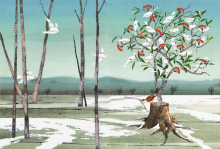
Many of us have made homes in religious traditions where we have found collective love, care, community-building, and resilience. But so much of what passes as spiritual in the United States — churches who only see their work as therapeutic, prosperity gospel proponents, white evangelical nationalists, New Age movements — is commodification by other means. John warns us against false prophets who, through quick fixes and distorted spiritual comforts, foster division and confusion in the service of lucrative self-aggrandizement.
I am an ordained minister in the Fellowship of Affirming Ministries, and I work as a movement chaplain in Los Angeles. I was trained as a spiritual director, and I have been doing ministry with faith-rooted activists since 2016. My work is informed by my primary training as a medical anthropologist and community researcher. I know that Jesus said that we humans are of more value than many sparrows, but I’ve found that we are a lot like them. We need refuge and sustenance. We need shelter. We need to nest somewhere. But with whom shall we do this for the short and long haul? And where shall we build our nests?

I’ve followed Robert Monson’s work for years. Monson is a writer and theologian who focuses on Black theology, contemplation, and disability. He is also one of the first people outside my direct orbit to encourage my writing (not just my reporting), and I’ve always found him to be encouraging, joyful, and thoughtful.
Lately, as I have been reading Monson’s work, I’ve found that he is becoming rather soft. Now, before you think those are fighting words, I’ve thought this because it’s the term that Monson uses to describe himself and his aspirations as a man. He sees softness as an ethic to live into, a way of honoring his personhood and the personhood of others.

Some books utterly disrupt you. I was doing research for an essay on St. Augustine and slavery when I first came across humanities scholar Jennifer Glancy’s Slavery in Early Christianity. Reading this book made me realize that everything I thought I knew about the history of Christianity and slavery was wrong.
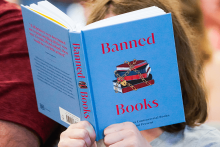
Book-banning has always been about censoring the stories, histories, and information that push us to question the status quo.

Gratitude is far more radical than slapping a #blessed hashtag on a social media post. When we give thanks, we are invited to build a beloved community that aligns with our enduring moral values of justice, peace, and love for our neighbors.
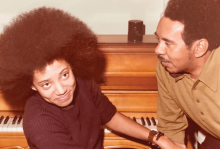
FOR BLACK people in the U.S.—a collective from which lives are still stolen on a daily basis, as though the slave-boat travels of 1619 never ended but merely set course in new directions to the same destination—reclamation is essential. Perhaps our history motivated the poet Nikky Finney’s father to repurpose a phrase that long had a negative connotation into a moniker to give his daughter positive focus.
“My mother steeped us in the stories of Black history and my father named me ‘Love Child’ in order not to give anyone else the opportunity to distract me from what I had come to earth to be,” writes Finney, winner of the 2011 National Book Award for Poetry, in her newest collection, Love Child’s Hotbed of Occasional Poetry. “So be she.”
And so she is. About a month into quarantine 2020, Finney released perhaps the most history-and-affection-freighted book to be published this harrowing year. Love Child’s Hotbed cannot be read on a Kindle. Less a typical, slender publication of modern verse, and more a hefty coffee-table book of startling import, it brings to mind The Black Book, that historical anthology co-edited in 1974 by Toni Morrison, the eventual Nobel laureate in literature who was an editor at the publishing company Random House. A book that strove to contain the vast lives of Black people in the U.S.—their horrific experiences and their magnanimous achievements—The Black Book was a gift to the nation’s children and grandchildren of slaves (and even inspired one of the greatest novels of all time, Morrison’s Beloved). Likewise, in a time of immense death and thus plundering of families, Finney’s latest book is a blessing for a continuously undone but never destroyed people, reaching into the past to grasp hope and self-worth to sustain their future.
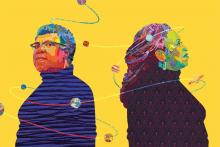
A FEW YEARS ago, an acquaintance and I found ourselves debating the value of art in a capitalist society—a suitably light topic for a summer evening. My companion believed strongly that art must explicitly denounce the world’s injustices, and if it did not, it was reinforcing exploitative systems. I, ever the aesthete, found this stance reasonably sound from a moral perspective but incredibly dubious otherwise.
Then, as now, I consider art’s greatest function to be its capacity for expanding our conceptions of reality, not simply acting as moralistic propaganda. After all, the foundational thing you learn in art history is that the first artists were mystics, healers, and spiritual interlocutors—not politicians.
We started making art, it seems, to cross the border between our world and one beyond. Prehistoric wall paintings of cows and lumpy carvings of fertility goddesses serve as the earliest indications of our species’ artistic inclinations, blurring the lines between religious ritual and art object. Even as the world crumbles around us, I am convinced we must hold onto art’s spiritual properties rather than succumbing to the allure of work that only addresses our current systems.

Toni Morrison understood that belief and faith are substantial to the sustaining force of black folks navigating both slavery and post-slavery traumas.
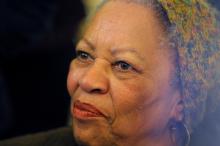
Morrison’s wisdom and her immense love for blackness — a heritage, but also a color often used to describe evil and evoke disgust — have been blessings to the world for almost half a century. She has written and published eleven novels, numerous children’s books and nonfiction books, two plays, a libretto for an opera, and despite being 87-years-old, she shows no signs of stopping.
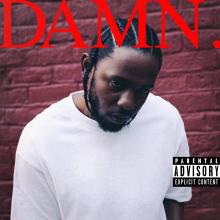
For what the singer/songwriter/music producer Pharrell said two years ago about Kendrick Lamar is absolutely true. Kendrick Lamar is the Bob Dylan of his generation, an American storyteller on the same plane as Toni Morrison, Eugene O’Neill, Pearl S. Buck, and other U.S. Nobel Prize in Literature laureates. Why this statement may seem overblown is because of highbrow bias against hip-hop, which is to say bias against black language, black storytellers, black people. But, to quote Chuck D, the leader of the rap group Public Enemy, hip-hop is “CNN for black people.” And Lamar is the best reporter in the business.

On Jan. 21, I’ll join thousands in D.C. for the Women’s March on Washington. My first stop will be at a local congregation, one of several hosting a prayer service and warming station for marchers. I’m an anti-racist, feminist, Christian, and for me, faith will be part of the day.
I’ve been disappointed with Christian silence, and even active resistance, to social justice imperatives, but my commitments to justice stem from my faith, and that’s why I march.
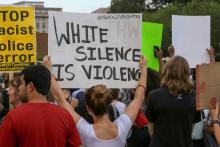
Stop telling me to fight. Stop saying on your social media platforms, and in your blogs and your op-eds, that everyone should dust themselves off and get up and fix this. Stop saying that addressing this issue is everyone’s duty, because I can’t even begin to explain to you how far from the truth such a statement is.
But I’ll try. I will overcome my exhaustion and explain this to you as clearly as I can, and you can thank me later, if you’re so inclined. Let it be known that I like Edible Arrangements.
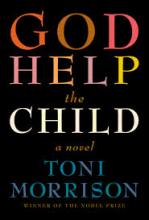
“WHAT YOU do to children matters. And they may never forget.”
This thread runs aggressively through Toni Morrison’s most recent novel, God Help the Child. The speaker is Sweetness, a woman who shares her family’s wounds from trying to pass for white, or “high-yellow,” for generations. Of trying to blend in well enough to drink at fountains, to try on hats in stores, to use the same Bible as whites during ceremonies. When her child and the novel’s focus, Bride, is born black, “midnight black, Sudanese black ... blue-black,” all the advancement Sweetness and her ancestors strove for dies. She loses her husband (who assumes she has been unfaithful), her social standing as a light-skinned woman, and any love for her child. “Her color is a cross she will always carry,” Sweetness says. “But it’s not my fault. It’s not my fault. It’s not my fault. It’s not.”
Bride grows up without the love of a mother’s touch and scorned for being so oddly dark, until she learns to use her color to make herself exotic and marketable. What may seem to be a character living into her identity as a black woman is really a façade in order to regain what was lost because of her skin. Of course, what Bride sees as progress is actually proof that she too has fallen into Sweetness’ obsession with what Morrison described in a recent NPR interview as “skin privilege—the ranking of color in terms of its closeness to white people or white-skinned people and its devaluation according to how dark one is and the impact that has on people who are dedicated to the privileges of certain levels of skin color.” But while race and color as social constructs are themes in the book, they are not explored as deeply or given as much emphasis as childhood trauma.
As in some of Morrison’s other novels, magical realism conveys the battle between the past and the present, the spiritual and the physical, playing a poignant, visceral part in Bride’s journey. Bride goes through a literal metamorphosis, assuming it is penance for gruesome choices she made as a child to feel alive and as an adult to feel powerful. She is numbed to what true progress and success are, constantly trying to put a fragmented identity together until she can no longer get up and must face her trauma and changing body.
The only people in the novel who allow themselves to truly heal are a child named Rain and an ex-convict named Sofia. They speak to the power of self-forgiveness. Too often we carry the shame and hate handed to us by other people’s evil, whether from childhood trauma and abuse or complacency and apathy as adults. While we can and must be held accountable for our own mistakes, we must also be willing to take off the shroud of self-loathing and guilt, and move forward past trauma into self-acceptance and healing. Both Rain and Sofia, young and old, can see the power of blame and regret and refuse to walk that path, while Bride, her lover Booker, and her mother Sweetness will arguably always drag the sins of their forebears behind them.
“What you do to children matters. And they may never forget.”